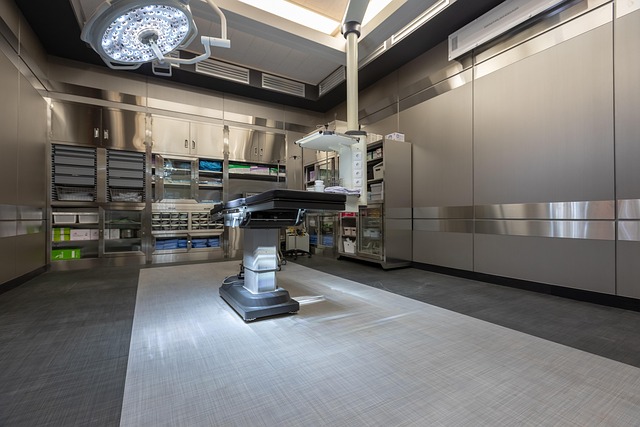In the past decade, the convergence of artificial intelligence and natural language processing has given rise to a new generation of virtual assistants that can converse with patients, triage symptoms, and recommend evidence‑based next steps. These virtual assistants, known as medical chatbots, are not merely chat tools; they are clinical decision support engines that can interpret user‑entered data, recognize patterns, and suggest diagnostic pathways that historically required a clinician’s direct involvement. As a result, medical chatbots are becoming pivotal in reshaping how diagnostic information is collected, interpreted, and acted upon across primary care, specialty clinics, and telehealth settings.
Historical Perspective on Clinical Conversational Agents
The idea of a computer‑mediated dialogue for medical purposes dates back to the 1960s, with early expert systems such as MYCIN that attempted to diagnose bacterial infections. Those systems relied on rule‑based logic and were limited by the computational resources of their era. The rise of the internet in the 1990s brought the first health‑focused chat services, offering users general health information via scripted scripts. However, the real transformation began in the 2010s, when machine learning models were trained on vast amounts of clinical text, allowing chatbots to generate natural language responses that could adapt to a patient’s phrasing and emotional tone. This leap set the stage for the sophisticated diagnostic tools we see today.
Core Functions of Modern Medical Chatbots
Medical chatbots perform a suite of tasks that collectively streamline diagnostic workflows. First, they collect patient histories by asking targeted questions, often employing adaptive questioning techniques that narrow down symptom clusters. Second, they cross‑reference user input with up‑to‑date clinical guidelines to generate provisional diagnoses or differential lists. Third, they can recommend self‑care measures, suggest when to seek in‑person care, or directly schedule appointments with clinicians. Finally, they integrate with electronic health record (EHR) systems to document interactions, thereby creating a seamless digital trail for subsequent providers.
Data Collection and Symptom Assessment
By using natural language processing, medical chatbots interpret free‑text entries and translate them into structured symptom descriptors. For example, a user typing “I’ve had a throaty ache and sore throat for a week” triggers the system to map these words to key clinical features such as “pharyngitis” and “duration.” The chatbot then asks clarifying questions—“Did you notice a fever?” or “Are you experiencing difficulty swallowing?”—to refine its understanding. This iterative dialogue mirrors the clinical history‑taking phase performed by physicians and nurses in person.
Evidence‑Based Diagnostic Reasoning
Once sufficient data are collected, the chatbot leverages curated knowledge bases and published diagnostic algorithms. For instance, in cases of chest pain, it can apply the HEART score framework to assess risk. The chatbot weighs each parameter (history, ECG, age, risk factors) and outputs a risk category—low, intermediate, or high. Depending on the score, the system may advise immediate ED evaluation or suggest that the patient monitor symptoms and follow up. These recommendations are derived from peer‑reviewed literature and guidelines, ensuring that patients receive clinically sound advice.
Integration with Clinical Care Pathways
“The value of a medical chatbot lies not only in its ability to triage but also in its capacity to create continuity of care.”
Medical chatbots are increasingly designed to interface with EHRs, thereby inserting diagnostic notes into a patient’s record in real time. This feature allows clinicians to view the chatbot’s findings during consultations, ensuring that virtual triage informs in‑person decision making. In some settings, the chatbot can flag urgent cases with automated alerts that prompt the care team to expedite evaluation. By embedding itself within existing workflows, the chatbot becomes an extension of the clinician’s toolkit rather than a standalone entity.
Impact on Patient Access and Health Equity
One of the most transformative aspects of medical chatbots is their potential to democratize access to diagnostic information. Patients in rural or underserved areas often face long waits to see specialists; chatbots can provide immediate symptom assessment and triage, reducing unnecessary travel. Additionally, language‑agnostic chat interfaces can accommodate non‑English speakers by offering multilingual support, thereby mitigating language barriers that often impede quality care. Because these systems operate 24/7, patients can obtain guidance during evenings or weekends when clinic hours are closed.
Reducing Healthcare System Burden
By efficiently filtering low‑risk cases, medical chatbots alleviate pressure on primary care offices and emergency departments. Studies have shown that a well‑implemented chatbot can reduce unneeded urgent care visits by up to 30%. This conservation of resources frees clinicians to focus on complex cases and improves overall system throughput. Moreover, the consistent and standardized nature of chatbot assessments helps reduce diagnostic variability and supports quality metrics for care delivery.
Enhancing Patient Engagement and Health Literacy
When patients receive clear, concise explanations of their potential diagnoses, they are more likely to engage in recommended self‑care or follow‑up actions. Medical chatbots can provide educational snippets tailored to the user’s level of understanding, using plain language and avoiding medical jargon. This personalized education improves health literacy and empowers patients to take an active role in their care, which is correlated with better adherence to treatment plans.
Challenges and Ethical Considerations
Despite their promise, medical chatbots are not without limitations. Their effectiveness depends heavily on the accuracy of natural language processing models, which can falter when encountering slang, misspellings, or culturally specific expressions. There is also the risk of overreliance; patients might accept a chatbot’s recommendation without seeking further medical advice, potentially delaying appropriate care. Ethical concerns about data privacy, informed consent, and algorithmic bias must be rigorously addressed to maintain patient trust.
Ensuring Transparency in Decision Logic
Medical chatbots should disclose the basis for their recommendations, whether that is a clinical guideline, statistical model, or rule‑based algorithm. Transparency allows patients and clinicians to understand the confidence level of each suggestion, fostering shared decision making. Regulatory bodies are beginning to mandate such disclosures, especially for diagnostic tools that influence treatment pathways.
Addressing Bias and Fairness
Training data for conversational agents often come from electronic health records that reflect historical disparities in care. If not carefully curated, these datasets can perpetuate biases against certain demographic groups. Developers must implement bias mitigation techniques—such as balanced sampling and fairness audits—to ensure equitable performance across age, gender, race, and socioeconomic status. Ongoing monitoring and recalibration are essential to sustain fairness over time.
Future Directions and Emerging Innovations
Looking ahead, the next wave of medical chatbots will likely incorporate multimodal inputs, including voice, images, and wearable sensor data. For example, a chatbot could analyze a user’s uploaded photo of a rash or ingest real‑time heart rate variability from a smartwatch to refine its diagnostic suggestions. Furthermore, integration with genomic data could enable personalized risk assessments for hereditary conditions. As these capabilities mature, medical chatbots will evolve from symptom checkers into comprehensive diagnostic partners that support every stage of patient care.
AI‑Driven Continuous Learning
Unlike static rule‑based systems, modern medical chatbots can learn from each interaction. By aggregating anonymized patient outcomes, the system updates its predictive models to improve accuracy. This continuous learning loop ensures that diagnostic algorithms remain current with emerging diseases, treatment protocols, and epidemiological trends. In essence, the chatbot becomes a living, evolving knowledge base that keeps pace with the dynamic nature of medical science.
Collaboration Across Disciplines
The successful deployment of medical chatbots requires collaboration among clinicians, data scientists, ethicists, and regulatory experts. Interdisciplinary teams can ensure that the technology is clinically relevant, technically robust, ethically sound, and legally compliant. This collaborative framework is essential for fostering innovations that are both groundbreaking and responsible.




